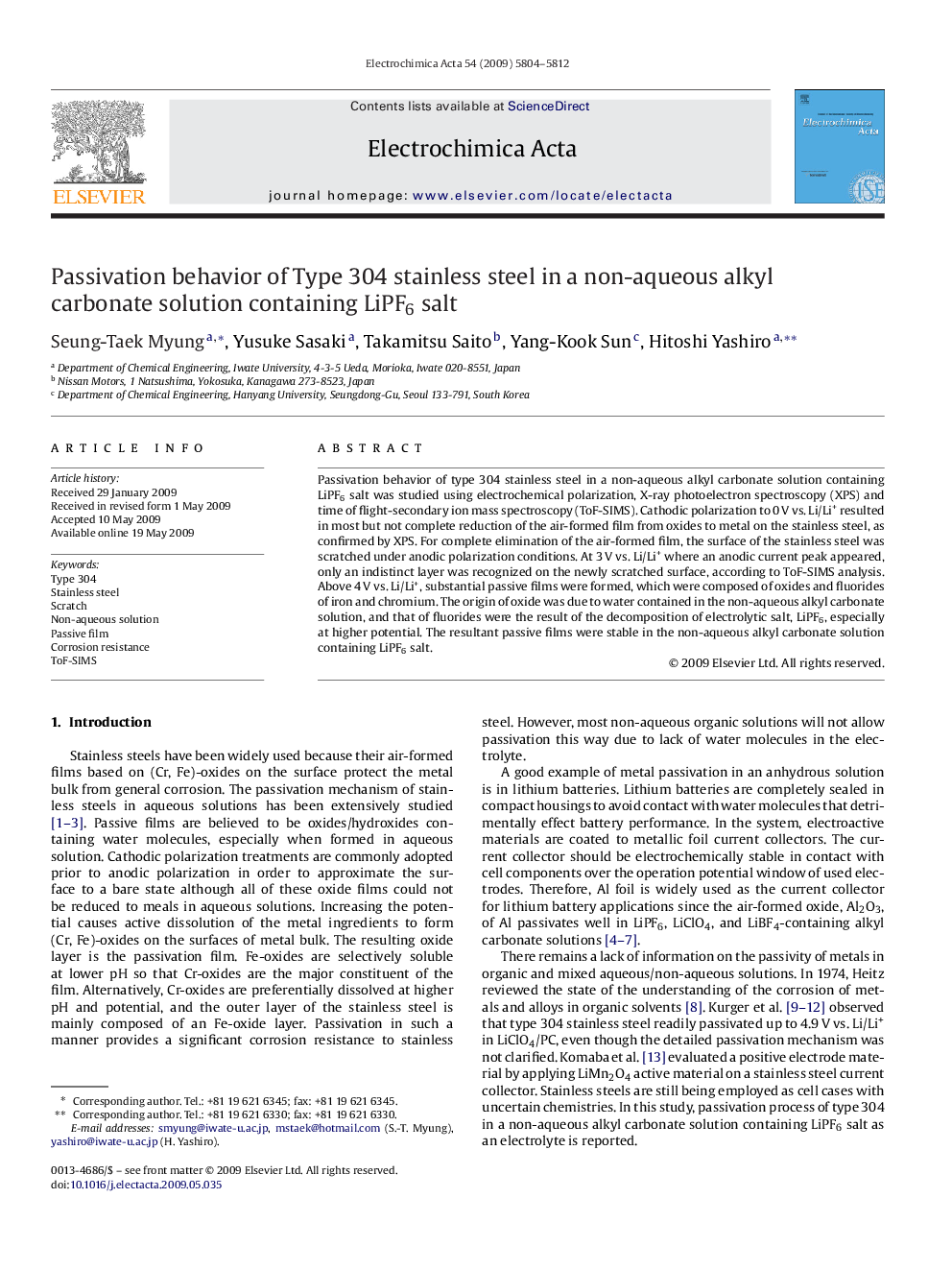| Article ID | Journal | Published Year | Pages | File Type |
|---|---|---|---|---|
| 192730 | Electrochimica Acta | 2009 | 9 Pages |
Passivation behavior of type 304 stainless steel in a non-aqueous alkyl carbonate solution containing LiPF6 salt was studied using electrochemical polarization, X-ray photoelectron spectroscopy (XPS) and time of flight-secondary ion mass spectroscopy (ToF-SIMS). Cathodic polarization to 0 V vs. Li/Li+ resulted in most but not complete reduction of the air-formed film from oxides to metal on the stainless steel, as confirmed by XPS. For complete elimination of the air-formed film, the surface of the stainless steel was scratched under anodic polarization conditions. At 3 V vs. Li/Li+ where an anodic current peak appeared, only an indistinct layer was recognized on the newly scratched surface, according to ToF-SIMS analysis. Above 4 V vs. Li/Li+, substantial passive films were formed, which were composed of oxides and fluorides of iron and chromium. The origin of oxide was due to water contained in the non-aqueous alkyl carbonate solution, and that of fluorides were the result of the decomposition of electrolytic salt, LiPF6, especially at higher potential. The resultant passive films were stable in the non-aqueous alkyl carbonate solution containing LiPF6 salt.
